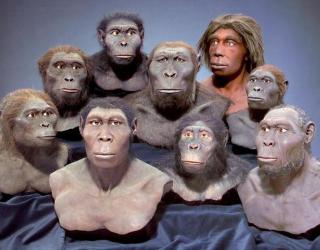Humans evolved in body size 1.7 million years ago in Koobi Fora region of Kenya: Study

A new study conducted by researchers from the University of Tubingen and the University of Cambridge has revealed that our ancestors came in different shapes and sizes almost two million years ago.
The study compared the body size of early humans who lived between 1.5 million and 2.5 million years ago. The researchers used tiny fossil fragments in order to develop a method of calculating the height and body mass of early humans.
They focused on three species that are known to have lived in Africa. These include Homo habilis, Homo rudolfensis and Homo ergaster (the working man). The researchers compared measurements of fossils from sites in Kenya, Tanzania, South Africa, and Georgia.
They discovered considerable local variation in the size of early humans during the Pleistocene and found that early humans ranged from 4 feet 8 inches to almost six feet tall.
According to the study researchers, primary increase in body size occurred tens of thousands of years after Homo erectus departed Africa and mostly in the Koobi Fora region of Kenya.
The groups, which lived in South African caves, averaged 4.8 feet tall, whereas early humans from Kenya's Koobi Fora region stood at almost 6 foot. This is the average of today´s male population in Britain.
Manuel Will, STUDY’S lead author, researcher from the Department of Early Prehistory and Quaternary Ecology, University of Tubingen said, “The evolution of larger bodies and longer legs can thus no longer be assumed to be the main driving factor behind the earliest excursions of our genus to Eurasia.”
According to co-author Manuel Will from Tübingen, the evolution of larger bodies and longer legs can no longer be assumed to be the reason behind the earliest expeditions of our genus to Eurasia.
You May Also Like
- Massive diversity noticed in body size of early humans: Study
- Interbreeding between Neanderthals and H. sapiens in Middle East occurred around 50,000-60,000 years ago: Study
- Humans Started Using Fire around 350,000 years ago: Study
- Mating Strategy linked to Group’s Size in which they are raised
- Activity throughout Life Key to Building Bone Strength: Study



